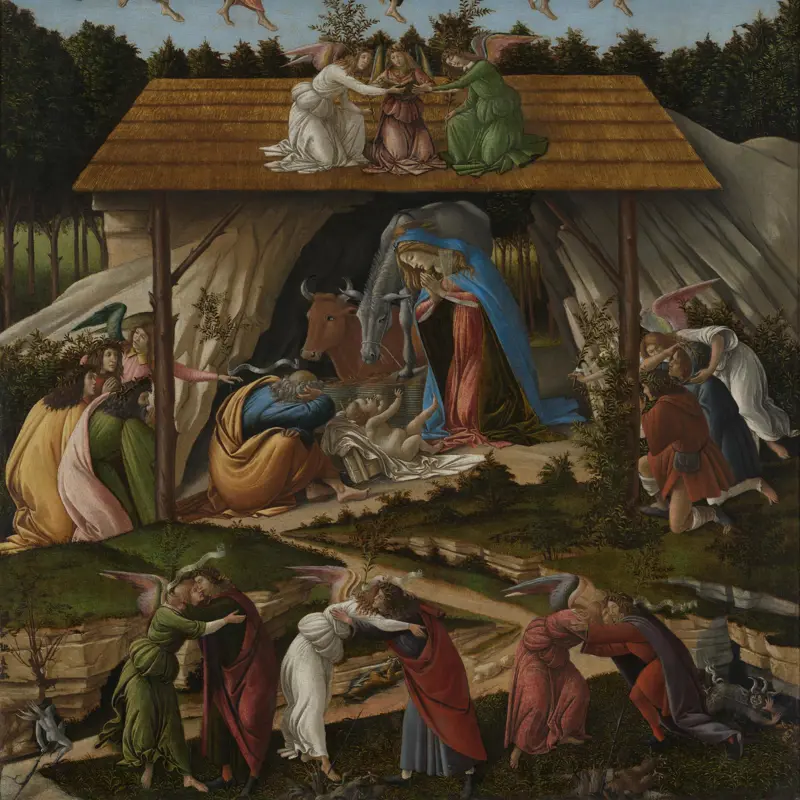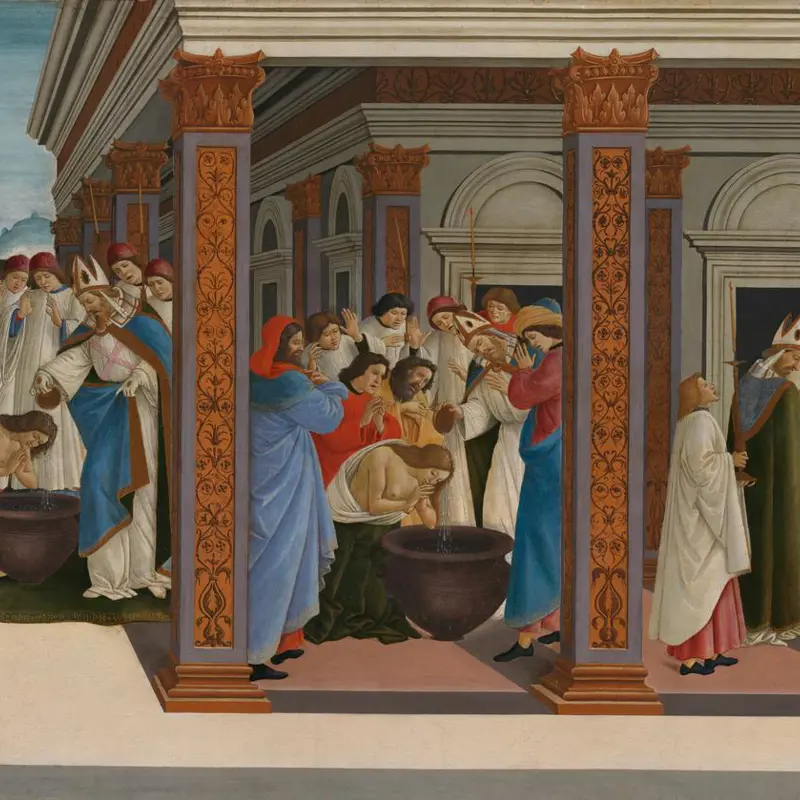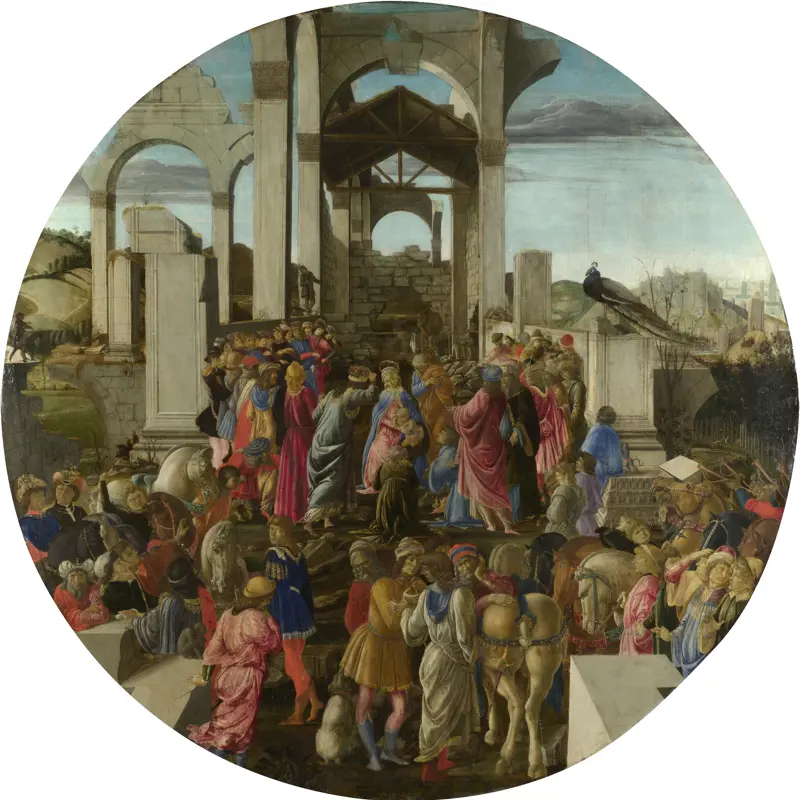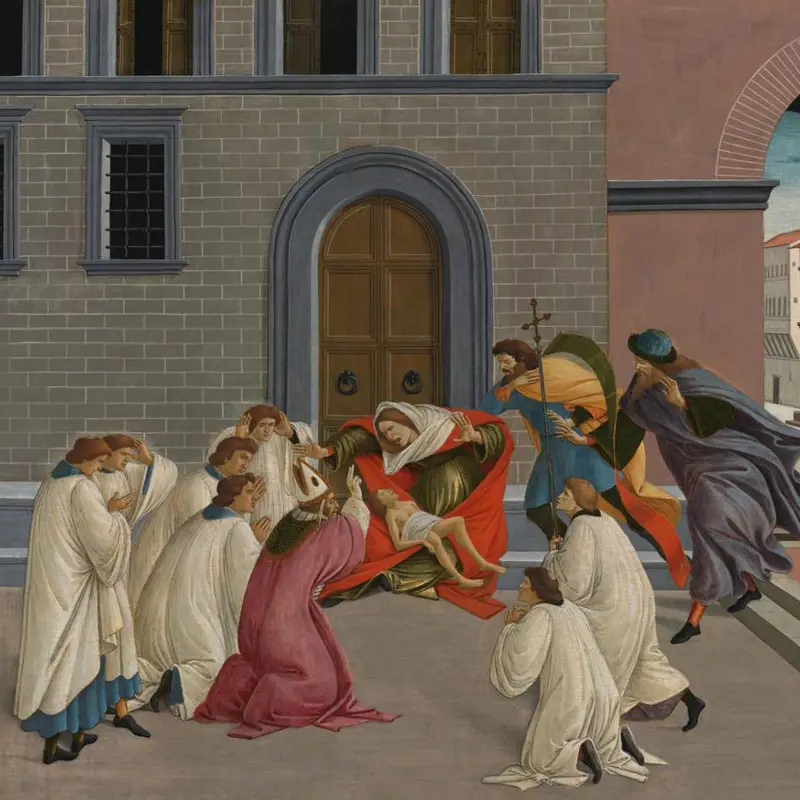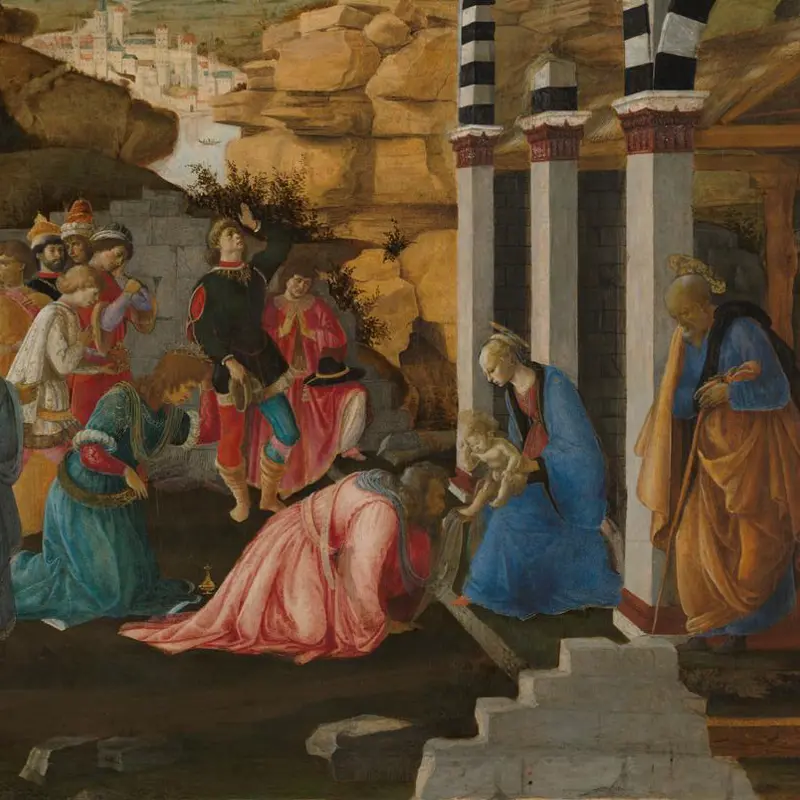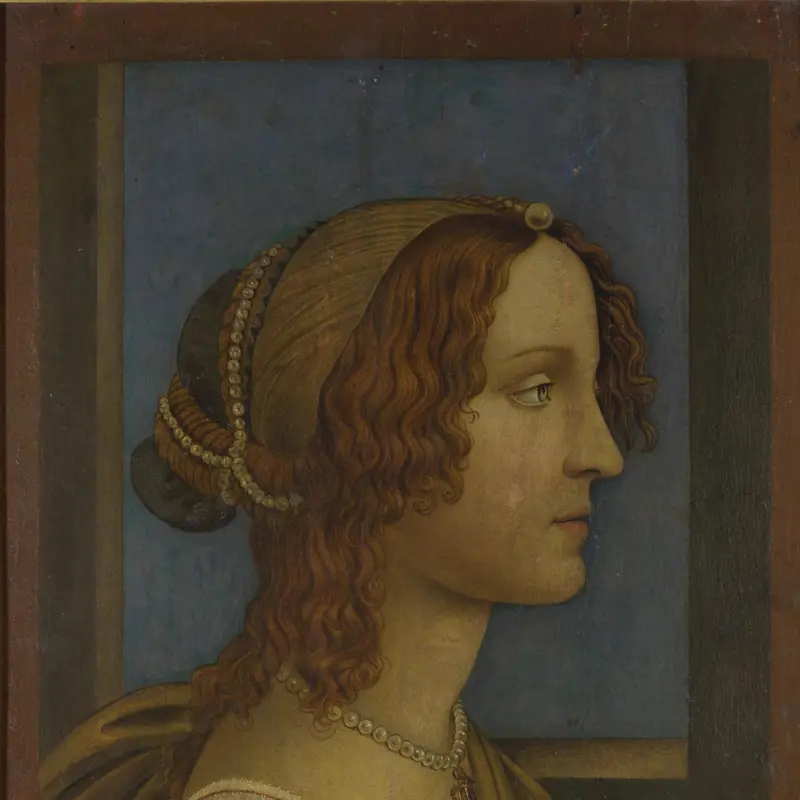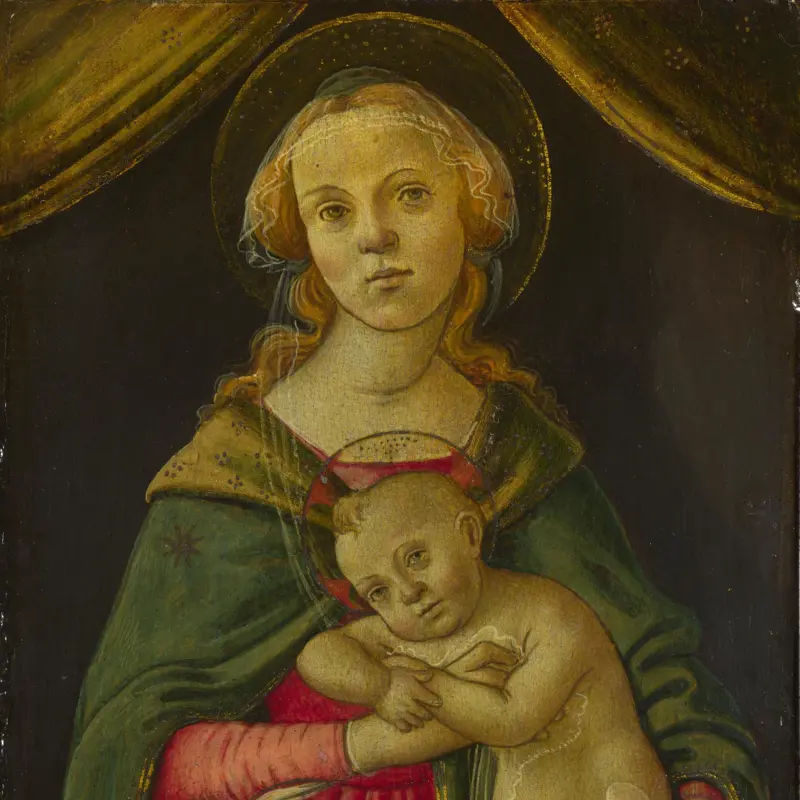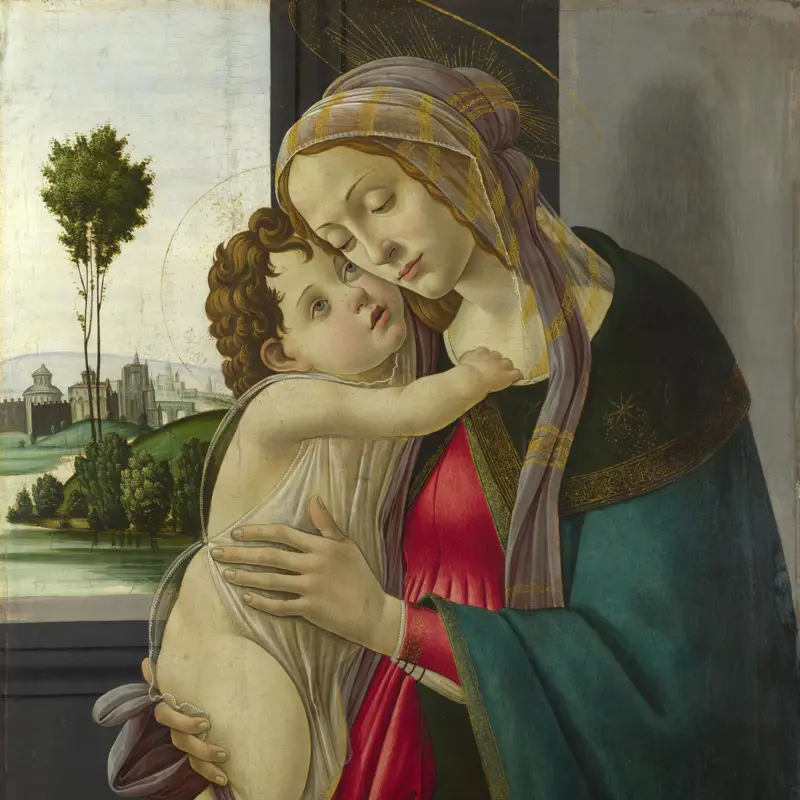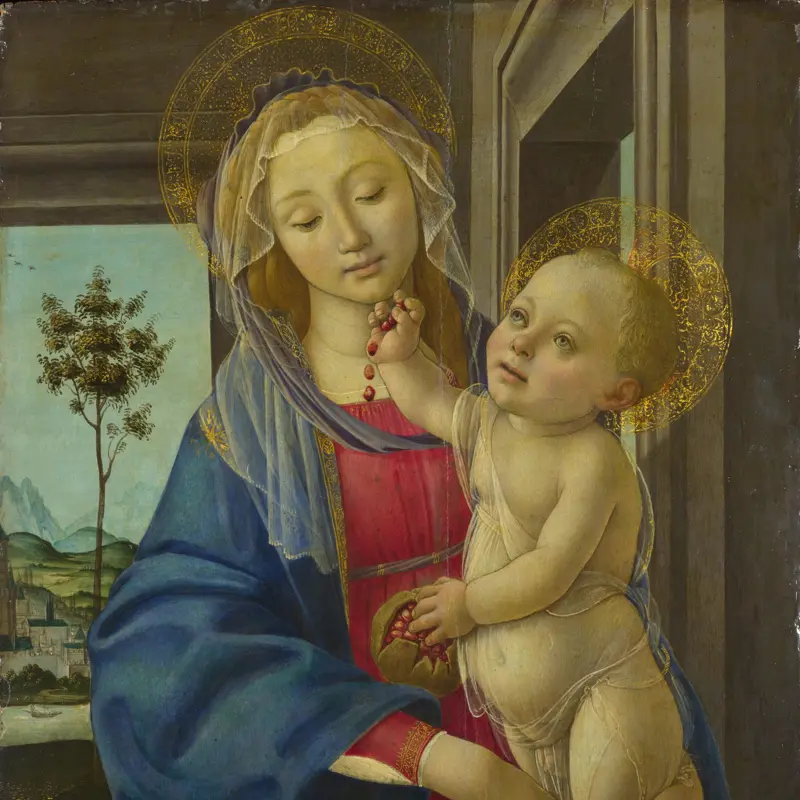Workshop of Sandro Botticelli, 'The Virgin and Child with Saint John and Two Angels', probably about 1490-1500
About the work
Overview
The Virgin Mary sits on a stepped bench in front of a bed of roses, the infant Christ resting on her lap. He hangs on to his mother’s veil, raising his other hand in a gesture of greeting. Both figures make direct eye contact with the viewer, while an angel to either side holds a jewelled crown over the head of the Virgin. A young Saint John the Baptist kneels in the foreground, his hands crossed over his chest as he looks on in devotion.
Circular paintings like this, better known as tondi (from the Italian for ‘round’), were popular in fifteenth-century Florence, and the workshop of Sandro Botticelli specialised in their production. This one was acquired by Charles Eastlake, first Director of the National Gallery, in 1855. The purchase caused some controversy, however, in part because other works made in Botticelli’s workshop are of a much higher standard.
Key facts
Details
- Full title
- The Virgin and Child with Saint John and Two Angels
- Artist
- Workshop of Sandro Botticelli
- Artist dates
- about 1445 - 1510
- Date made
- probably about 1490-1500
- Medium and support
- egg tempera on wood
- Dimensions
- 114.3 × 113 cm
- Acquisition credit
- Bought, 1855
- Inventory number
- NG226
- Location
- Not on display
- Collection
- Main Collection
- Previous owners
Provenance
Additional information
Text extracted from the ‘Provenance’ section of the catalogue entry in Martin Davies, ‘National Gallery Catalogues: The Earlier Italian Schools’, London 1986; for further information, see the full catalogue entry.
Bibliography
-
1903J.A. Crowe and G.B. Cavalcaselle, A History of Painting in Italy, Umbria, Florence and Siena, from the Second to the Sixteenth Century, ed. R.L. Douglas, 2nd edn, 6 vols, London 1903
-
1905G. Lafenestre and E. Richtenberger, La peinture en Europe. Rome. Les musées, les collections particulières, les palais, Paris 1905
-
1923R. van Marle, The Development of the Italian Schools of Painting, 19 vols, The Hague 1923
-
1925Y. Yashiro, Sandro Botticelli, London 1925
-
1938J. Mesnil, Botticelli, Paris 1938
-
1951Davies, Martin, National Gallery Catalogues: The Earlier Italian Schools, London 1951
-
1959F. Zeri, La Galleria Pallavicini in Roma, Florence 1959
-
1961M. Davies, The Earlier Italian Schools, 2nd edn, London 1961
-
1978R. Lightbown, Sandro Botticelli, London 1978
-
1986Davies, Martin, National Gallery Catalogues: The Earlier Italian Schools, revised edn, London 1986
-
2001
C. Baker and T. Henry, The National Gallery: Complete Illustrated Catalogue, London 2001
About this record
If you know more about this work or have spotted an error, please contact us. Please note that exhibition histories are listed from 2009 onwards. Bibliographies may not be complete; more comprehensive information is available in the National Gallery Library.

